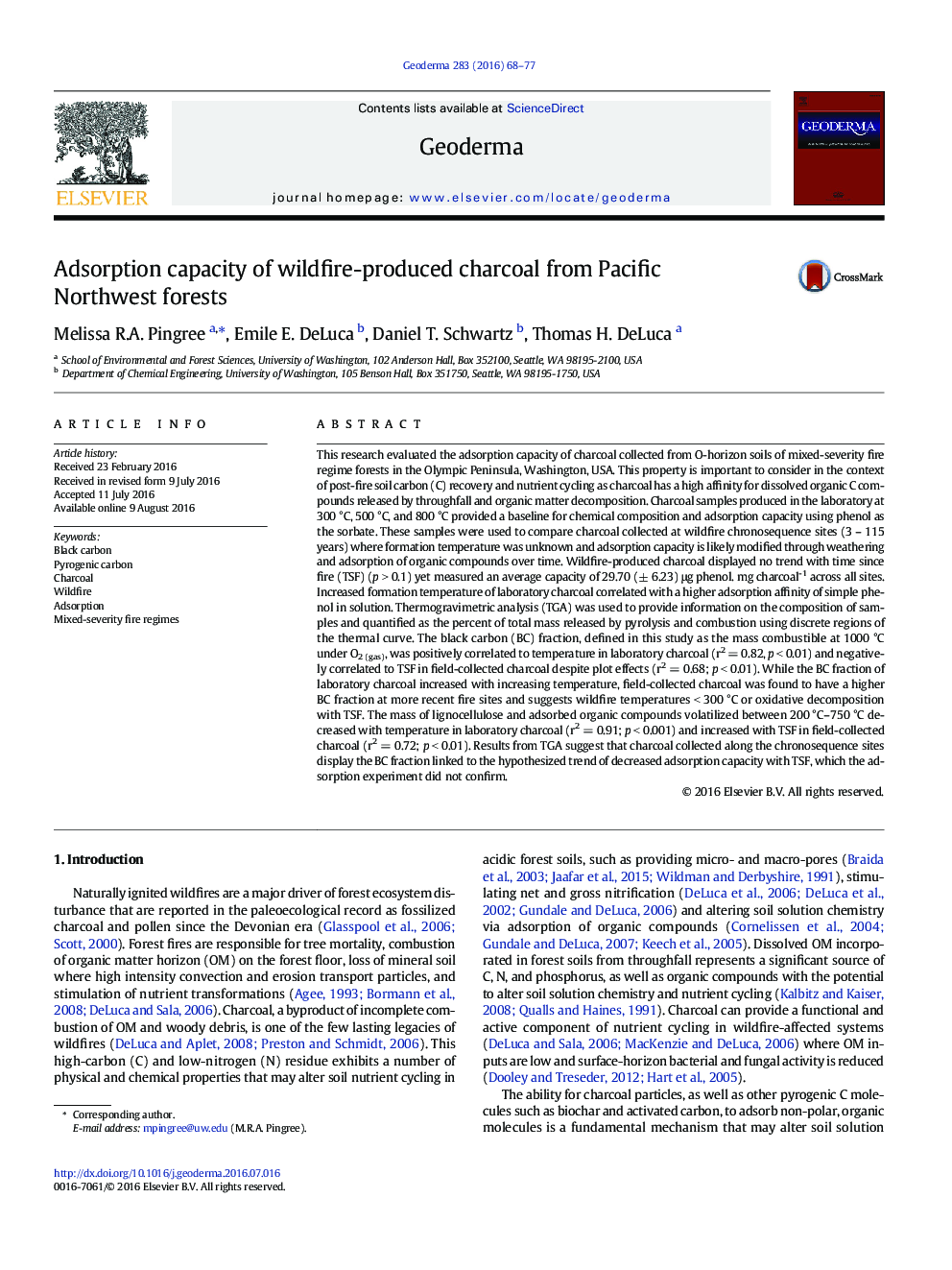| کد مقاله | کد نشریه | سال انتشار | مقاله انگلیسی | نسخه تمام متن |
|---|---|---|---|---|
| 4572851 | 1629434 | 2016 | 10 صفحه PDF | دانلود رایگان |
• Adsorption capacity displayed no trend with time since wildfire formation.
• Black carbon fraction decreased significantly with time since wildfire formation.
• Wildfire charcoal likely reduces the presence of phenolic compounds in this system.
This research evaluated the adsorption capacity of charcoal collected from O-horizon soils of mixed-severity fire regime forests in the Olympic Peninsula, Washington, USA. This property is important to consider in the context of post-fire soil carbon (C) recovery and nutrient cycling as charcoal has a high affinity for dissolved organic C compounds released by throughfall and organic matter decomposition. Charcoal samples produced in the laboratory at 300 °C, 500 °C, and 800 °C provided a baseline for chemical composition and adsorption capacity using phenol as the sorbate. These samples were used to compare charcoal collected at wildfire chronosequence sites (3 – 115 years) where formation temperature was unknown and adsorption capacity is likely modified through weathering and adsorption of organic compounds over time. Wildfire-produced charcoal displayed no trend with time since fire (TSF) (p > 0.1) yet measured an average capacity of 29.70 (± 6.23) μg phenol. mg charcoal-1 across all sites. Increased formation temperature of laboratory charcoal correlated with a higher adsorption affinity of simple phenol in solution. Thermogravimetric analysis (TGA) was used to provide information on the composition of samples and quantified as the percent of total mass released by pyrolysis and combustion using discrete regions of the thermal curve. The black carbon (BC) fraction, defined in this study as the mass combustible at 1000 °C under O2 (gas), was positively correlated to temperature in laboratory charcoal (r2 = 0.82, p < 0.01) and negatively correlated to TSF in field-collected charcoal despite plot effects (r2 = 0.68; p < 0.01). While the BC fraction of laboratory charcoal increased with increasing temperature, field-collected charcoal was found to have a higher BC fraction at more recent fire sites and suggests wildfire temperatures < 300 °C or oxidative decomposition with TSF. The mass of lignocellulose and adsorbed organic compounds volatilized between 200 °C–750 °C decreased with temperature in laboratory charcoal (r2 = 0.91; p < 0.001) and increased with TSF in field-collected charcoal (r2 = 0.72; p < 0.01). Results from TGA suggest that charcoal collected along the chronosequence sites display the BC fraction linked to the hypothesized trend of decreased adsorption capacity with TSF, which the adsorption experiment did not confirm.
Journal: Geoderma - Volume 283, 1 December 2016, Pages 68–77
